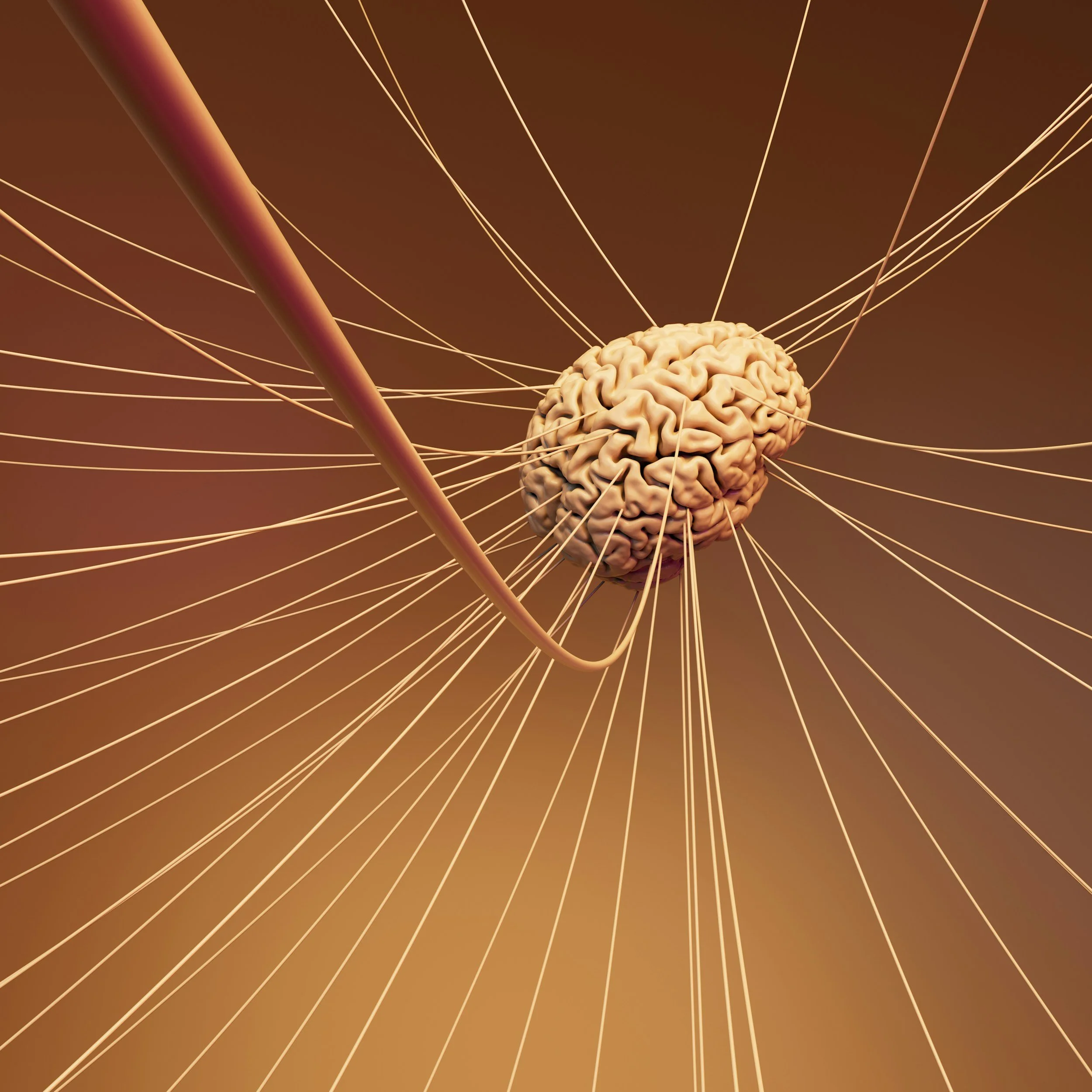Your Brain on Ketamine, explained simply
Ketamine is best known as a dissociative anesthetic, a label given by the FDA.
But over the last decade, it’s also become one of the most promising tools for healing wounds of childhood trauma, anxiety, depression, loneliness, and a psychospiritual tool.
Even though ketamine is made in a lab, psychedelic compounds like it also appear in nature — in trees, plants, and even ayahuasca brews.
From Anesthetic to Psychedelic Medicine?
It’s banana’s that something used to numb you in hospitals could also help someone heal emotionally. But here’s why it makes sense.
Ketamine increases neuroplasticity, which is your brain’s ability to form new connections. And this is crucial for healing from anxiety, depression, and trauma.
Let’s break that down.
Depression and Anxiety: The Problem of Mental Rigidity
Depression often traps people in rigid thought loops:
“There’s no point.”
“I’m not worth it.”
“Nothing will change.”
Anxiety is also a form of mental rigidity — just flavored with fear. Your body and brain become wired to:
expect the worst
over-prepare
try to control outcomes and people
This stuckness is called cognitive inflexibility — a core feature of many mental health conditions. Overtime, these forms of inflexibility lead to the DSM-5 diagnosis.
Ketamine interrupts those loops.
It helps you see new possibilities:
“Actually, I am worth it.”
“Maybe I don’t have to be in control for things to go well.”
It creates just enough space for a new perspective — and that’s where change begins.
So... How Does Ketamine Actually Do That?
This is the part where your eyes might glaze over if you're not into science — but stay with me. I’ll keep it simple.
When we talk about neuroplasticity, we’re talking about the brain’s ability to reorganize itself by forming new neural connections. This happens through things called synapses and dendritic spines (tiny structures on neurons that grow and change with experience & activity).
You’ve probably heard: “Neurons that fire together, wire together.” That’s neuroplasticity. Repeated thoughts, feelings, and behaviors create strong pathways in the brain.
Think of your morning routine:
You might wake up, walk to the bathroom, brush your teeth, and make your favorite morning bev — all without thinking. It’s automatic. In fact, your mind is probably somewhere else, but your body just knows what to do because of alllll those years of repetition. That’s your brain running on well-worn paths. It’s efficient, but it can also lock you into mental loops — including negative or limiting ones.
Chronic Stress Makes Change Harder
When you're under chronic stress, research shows that dendritic spines actually shrink. This doesn’t mean you lose neuroplasticity entirely — but it does mean your brain has a harder time building new connections.
In other words: It becomes harder to learn, to adapt, to shift beliefs, or to respond differently to stress when you are under chronic stress. This stress can be rooted in previous trauma experiences, or (most often) self induced by your own thoughts.
Over time, that rigidity becomes a diagnosis: depression, anxiety, PTSD, OCD.
Ketamine = Brain Fertilizer 🌱
Ketamine increases a key brain chemical called BDNF (Brain-Derived Neurotrophic Factor).
BDNF is like Miracle-Gro for your brain. It supports the growth and survival of neurons and promotes plasticity — helping your brain form new patterns, responses, and coping skills.
With more BDNF, your brain becomes more flexible, more resilient, and more able to heal.
Ketamine Also Quiets the “Chatter” of Identity
Another reason ketamine helps? It dampens something called the default mode network (DMN) — the brain network that handles self-reflection, daydreaming, and your sense of identity.
When you’re depressed or anxious, the DMN becomes overactive. You get caught in loops of:
“What if they’re mad at me?”
“What if I mess this up?”
“I am not enough.” (identity)
“I’m stupid / unlovable / incapable.” (identity)
That voice becomes loud. It feels like truth. But it’s not.
Ketamine temporarily quiets the DMN — giving you space from the inner critic, and loosening your grip on those limiting identity statements that were formed by negative conditionings by our caregivers and by society.
It doesn’t erase who you are. It just helps you see that you are so much more than the stories you’ve been repeating to yourself.
Rewriting Old Paths
Imagine your mind is like a ski mountain. Every time you think, feel, or behave in a certain way, you go down the same slope.Ketamine is like a fresh blanket of snow. It gives you a chance to choose a new path — one that’s softer, truer, more aligned with who you're becoming.
So... Why Combine Ketamine with Therapy?
Because of what ketamine does for the brain, any therapeutic process becomes more powerful.
New beliefs are easier to adopt
New coping skills stick more
Insights go deeper
Change feels possible
Plain and simple: when your brain is more flexible, healing accelerates.
Ready to explore how ketamine can support your healing?
If you're in New York or New Jersey and curious about beginning your own journey with ketamine-assisted therapy, I’d be honored to walk with you.
Whether you’re working through anxiety, depression, or deep-rooted childhood trauma, ketamine can help you soften old patterns and create space for something new.
In-person sessions in Westchester, New York.
Learn more or book a free consult here. Let's explore what healing could look like for you.
About the Author
Citlali “Lali” Herrera, LCSW is a psychospiritual therapist, hypnotherapist, and ketamine-assisted psychotherapy provider based in Westchester, NY. She specializes in helping women who grew up with emotionally immature parents heal patterns of self-doubt, people-pleasing, perfectionism, and hyper-independence.
Her work blends trauma-informed psychotherapy with subconscious healing, hypnotherapy, ancestral wisdom, and nature-based practices. Lali supports clients in learning to feel loved without earning it—rewriting the beliefs formed in childhood so they can set boundaries, trust their intuition, and take up space without guilt.
Lali holds a Master’s in Social Work from NYU, is licensed in NY & NJ, and has advanced training in hypnotherapy, psychedelic-assisted psychotherapy, and ketamine therapy. She offers onilne therapy across NY/NJ and nature-based therapy in Westchester, NY.
You can learn more at innerworldspsychotherapy.com or on Instagram at @innerworldspsychotherapy.
Sources:
Zanos et al. (2016) — Ketamine’s neuroplastic effects






